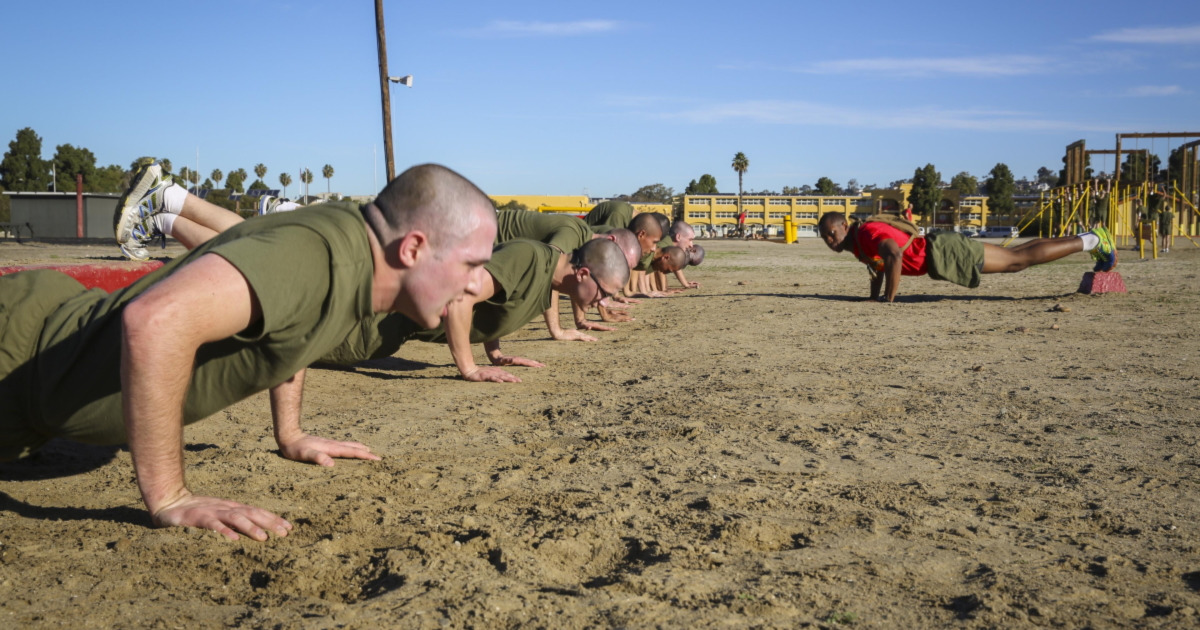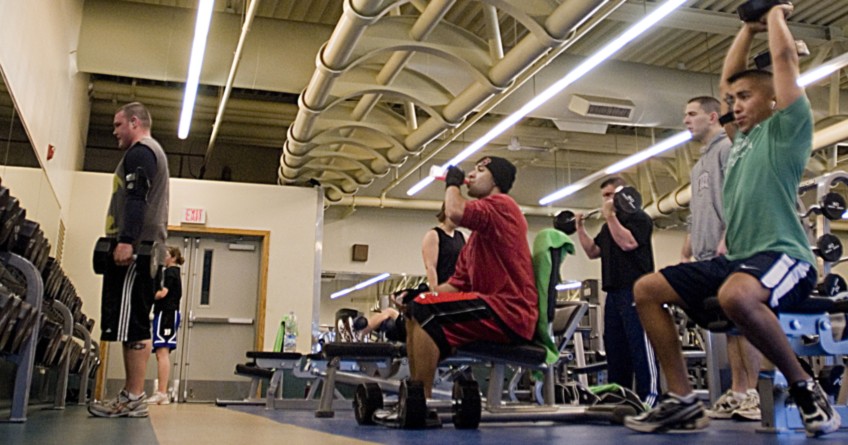
Interval Training
While we continue to work hard and improve our fitness with our home gym equipment, there are a some things we can do to maximize the time we put in and the benefits of interval training exercise have always been downplayed. Interval training is an excellent way to achieve more, reach all desired fitness goals while spending less time in the gym. Apart from the many health benefits of interval training, the speed with which interval training boosts your fitness level and the fun it brings into workout makes it a win-win situation.
Do you want to gain more in a short time at the gym or during sport? Read on for my reasons why you should try interval training today.
What is Interval Training?
Imagine jogging continuously for 5 hours, I do not think such extreme exercise is ideal. During the long period of exercise, there should be a series of low- and high-intensity moments. So interval training is a discontinuous physical training that demands a series of low to high-intensity workouts mixed with resting or relaxation.In essence, jog for 40 seconds and sprint for 20 seconds.
This concept has been around for years, and it has served the basis for athletic workouts. It has been used to fast track fitness training, which facilitates removal of lactic acids from the muscles by converting them into energy.
A lot of interval training programs have been designed specifically for different levels of training. Trainers and physiologists help measure the intensity and duration of activities that perfectly suit an athletes level of fitness and or sport. You might be wondering “How can these periods of activity be measured?”. Experts make use of AT (anaerobic threshold) testing, which measures the blood-lactate of the athlete during intense exercise.

What are the Benefits of Interval Training?
Apart from increasing strength, performance and endurance, interval training also provides the following unique health benefits.
1. Burning Calories in a Shorter Time Span
Interval training allows the burning of calories at a faster rate. Results have shown that interval training can burn more calories than other forms of exercise. In essence, a person who utilizes interval training burns a lot of calories while spending less time exercising because interval training sessions are shorter than traditional exercise sessions.
So this exercise is beneficial for burning body fat, which will go on to consume plenty of calories, which is beneficial for human health.
2. Increase Metabolic Rate
An increased metabolic rate is what aids calorie burning. This process uses body fat for energy rather than carbs. Interval training demonstrates an impressive ability to increase metabolic rate for hours after exercise. Interval training increases metabolic rate better than jogging and weight training, respectively.
3. Muscle Gain
Interval training also goes a long way in increasing muscle mass for trainers who incorporate this physical training process into their workout. In the long run, muscle gain depends in no small extent on the type of muscles employed during the training process – mostly, trunk and legs. However, weight training continues to be the ultimate form of exercise for muscle mass increase, but interval training supports and quickens this process.
4. Reduce Heart Rate and Blood Pressure
Interval training reduces heart rate and blood pressure in obese and overweight trainers, and this is a significant health benefit! Research has found out that interval training has reduced blood pressure more than the frequently recommended moderate-intensity exercise.
5. Improve Oxygen Consumption
Respiration is a process where individuals consume oxygen from the atmosphere into the body system to break down food molecules for energy generation. Oxygen consumption in exercise refers to the ability of the muscle to use oxygen. Interval training produces the same rate of oxygen consumption as traditional exercises. However, the level of oxygen consumed during interval training is achieved in a shorter time. So interval training can improve oxygen consumption over traditional exercise.
6. Reduce Blood Sugar Level
It has been observed that blood sugar can be reduced by interval training in fewer weeks of exercise. Studies have revealed that it reduces not just sugar level, but it also improves insulin resistance than traditional continuous exercise – a huge health benefit! However, in healthy individuals, interval training will not reduce blood sugar, but it will improve insulin resistance, and it does this better than traditional exercise.

Types of Interval Training
There are two types of interval training. The major differences between these two types are the technique utilized during training and the category of the athlete or level of training.
1. Fitness Level Interval Training
This type of interval training is usually recommended for amateurs and moderate exercisers. This preparation technique utilizes periods of high-intensity that normally lasts from 2 – 5 minutes, followed by trailed low-intensity of a similar time. When determining the high-intensity time frame, it pertinent that the level does not surpass the anaerobic edge, which is below 85% heart rate reserve.
2. Performance Level Interval Training
The performance interval training is a complex technique, and it is recommended for advanced athletes. The preparation strategy utilizes periods of high-intensity (85% - 100% heart rate reserve) that normally lasts from 2 – 15 minutes, and is followed by low-intensity periods of an equivalent or shorter time.
10 Examples of Interval Training Workouts
the following interval workouts can be incorporated into any workout session, and by properly regulating the intensity and duration of workout intervals with the duration of rest periods, desired fitness goals can be achieved quickly.
1. Jumping Rope
This is an effective and simple way to incorporate interval training to a workout routine. Jumping rope improves balance, agility, and strength – it aids in the burning of calorie, which is essential for weight loss and serves several health benefits.
2. Steps Training
This also serves a cardiovascular benefit, and it requires no equipment, nor much time to carry out – a set of stairs makes you ready for this.
3. Burpees
Burpees works the entire body and cardiovascular system – it is tough and simple. Begin by standing tall, at that point, hunch down and place your hands on the floor before you. Rapidly kick your feet back to a push-up position. While here, you can play out a push-up if you need an extremely intense exercise, or simply hop your feet back to begin position, jump high and repeat.
4. Shuttle Sprints
Shuttle Sprints can be performed side-to-side or forward, forward and backward. These are standard agility and speed drill used by athletes that play stop-and-go sport such as basketball, hockey, tennis, and soccer.
5. Walking Lunge with Weights
This exercise serves tremendous benefits for almost all athletes. It is used to build endurance, balance, and strength.
6. Pull Ups
Pull Ups as an interval training require some necessary equipment or creativity. It is essential in building the upper body strength.
7. Spinning
Spinning ensures individual execute high-intensity spin intervals. It helps in a cardiovascular workout, and it also builds both strength and endurance.
8. Push Ups
Push Ups strengthens the upper body and core strength. It is an interval exercise that uses the muscles in the chest, shoulders, triceps, back, abs and hips.
9. V-Sit Abdominal Exercise
The v-sit is an extreme core exercise that connects with the rectus abdominis, the outside obliques, and interior obliques. This activity additionally draws in the hip flexors.
10. Tuck Jumps
The tuck jumps require no equipment too. They are simple drills that improve power and agility.
7 reasons to try interval training [ Video]
The Do's and Don'ts of Interval Training
Do's
- Do move faster. Moving faster is a key in burning calories – the faster you move, the more calories you burn.
- Practice interval training on a minimum of three times a week. An intermediate trainer will get used to this type of training by doing it regularly, it will make it easier and quicker.
- Do warm-up before a workout, and relax after each workout session to prevents injuries – muscles will relax appropriately.
Don’ts
- Don’t practice on consecutive days. Interval training is intense, and it requires an adequate period of recovery.
- Dont perform interval training on an empty stomach. It requires a lot of energy to perform, so eating a banana an hour before the exercise will serve a great benefit.
Metabolic Conditioning
Using Interval Training in the weight room can come in the form of metabolic conditioning or energy systems training.
There are three different energy systems you need to train for good all round fitness, aerobic, anaerobic and Phosphagen. You can train these energy systems within the same workout by manipulating tempo, complexity and effort.
1. The aerobic energy system is one where you work for longer periods of time, you can do it continuously and your breathing is light to medium. Think of doing battle ropes in the gym, its rhythmic and you can perform it for over a minute without your respiratory system being under great stress.
2. The anaerobic energy system or lactic acid system is work usually around the 30 second mark. You feel your muscles burn and you want to stop the exercise, think of doing weighted thrusters. After around 30 seconds your shoulders start to burn and you’re close to failure.
3. The phosphagen system is your short burst of power system. Movements in which you perform singular large exercises with a focus on generate speed and force, think going back to the battle rope and instead of performing numerous ripples with the rope, perform separate double rope slams with a couple of breathes in between each rep. You have now switched up your energy system focus.
For good overall fitness levels you should perform a workout that challenges all of your energy systems, from this you will then be able to say which energy system is weaker and you can plan your training accordingly. For instance if you succeeded in completing the aerobic and phosphagen systems but failed on the lactic acid system, you may want to perform a training phase with a strong emphasis on the lactic acid system.
Add new comment